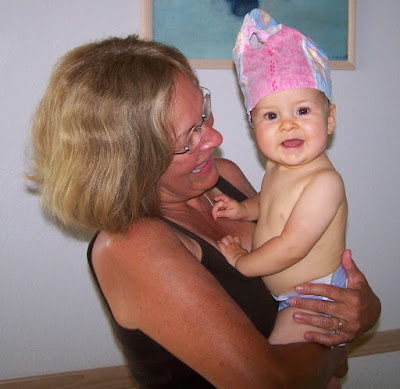Christmas Tree Past
Out of the 40 years we’ve been married, there may have been two that Paul and I didn’t cut down our own Christmas tree. Our timing is usually to decorate midway through December and then de-decorate (always reluctantly) sometime mid-January—a longish time to have a dying tree inside a warm house. While it’s very true that some of our Christmas trees-past lost most of their needles long before we took them down-- some nearly all as we carried them out the door-- most have looked pretty decent to the bitter end, even while laying in the driveway awaiting pickup.
One year, because our spent Christmas tree still looked so good, we set it in the garden just behind the house, propping it against the fence that held the grapevine. From my kitchen window I could see it through the months that followed, bravely taking what the winter dished out until spring rolled around and our family's back yard buzz resumed.
That spring, as I was hanging out laundry, a robin startled me, flying very fast and close to my head. This happened repeatedly until, fearing injury, I left the line and wet clothes to get a cap. On my way to the back door, I passed by the still-standing Christmas tree and noticed that it held a newly built nest; a closer look revealed three tiny blue eggs. The bird dive-bombing me was, of course, the mother or father, doing their best, I suppose, to protect the family. Our three young children were overjoyed to find the nest somewhat accessible to them and regularly asked for help to check on the progress going on within the ever-browning evergreen. The mother, of course, was not pleased with all the attention. Each time the back door opened or someone came anywhere near, she’d fly off the nest and stay off until the coast was clear. The coast was not often clear.
It wasn't long before we discovered three wriggling baby robins in place of the eggs. The Saturday of our discovery was unusually warm, and our family spent the day outside working and playing but also dodging the poor bird as she flew back and forth from her babies. Undeterred, we carried on, reasoning that it was our yard after all; the bird would have to deal with us. But when we took a final peek at the end of the day, we were horrified to see that all the baby birds, previously stretching necks and beaks upwards as they do, were now lying still and stiff in the bottom of the nest. The tree, long dead, hadn’t provided enough protection from the sun and the mother, absent from her nest for so much of the day, hadn't been much help.
Could this small tragedy have been prevented? Yes, of course, and in many ways. The birds could have selected a more protected spot. But birds don't always choose a safe place to lay and raise their young. I've seen nests in wreaths hanging on front doors, in lamp posts and potted plants. The dead Christmas tree wasn't the first bad choice ever made. And while that space may have been a convenient place given the food available in leftover (though severely wilted) grapes and garden worms, convenience can never be the first and only value in building any kind of home. While it's easy to blame the bird for the misfortune, our family may need to own up to the mistake of keeping a dead tree and then bugging the birds.
While ample lessons may be gleaned from this story, what immediately comes to mind as I write is the mantra of all realtors: "Location, location, location!" That poor tree as a location for raising baby birds was doomed from the beginning.
Perhaps a better lesson would be the one we gleaned (but never put into practice) from our nephew who said at the wise (acre) age or seven or eight, "Killing a tree is a lousy way to celebrate Christmas." Coincidentally, that's our nephew's parents decided to buy a potted conifer in hopes of keeping it alive until they could plant in the yard. Whether or not it lived to see the spring, I don't know.



Comments